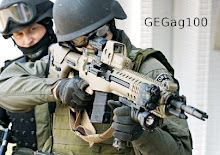Research is a powerful tool for critical thinking. Stephanie Coontz uses a lot of research to support her claims founded in "What We Really Miss About the 1950's".
Research, is essential. In order to create an accurate hypothesis, I must first have knowledge based on a subject. Coontz in her writing, used a lot of statistics, in order to create an image of true characteristics for each decade discussed. Also, through her research, I was able to understand points that otherwise have no application to my interests.
I feel that Coontz purpose is to help inform others about the 1950's and re-evaluate their reasoning for selecting the 1950's as the most ideal time to raise a family. She focuses much of her research towards what families were like. She expounds upon that also with research about why families were that way. Because she presented the fact, about mothers staying home full time to raise kids, along with the World War II background summary, I am able to better understand, why her first fact may be true. She always has her facts together supporting one another, which allows assumptions or perspectives validity. Throughout the story, Coontz brings facts to attention, in a non-argumentative way. Instead of proving specific points, she presents research she found and allows others to be critical thinkers themselves.
I cannot bring up a specific cultural belief, but I recognize that in Coontz's paper, she brings out both good and bad in all her subjects. An example; is when she talks about non-marital pregnancies, in relation to children born to married couples. The negative research, points at non-married pregnancies, while the more positive research is seen as more births to married couples.
What I find to be most interesting about both of these pieces is, their indirect relationship. Both of these story's can be seen as a way to initialize critical thinking. Soto, uses examples to allow readers to begin a critical thinking process. As I read Soto's story, I recognized how the culture of the American family, may differ from reality. Because of the examples of the young boy, I began my own critical thinking process about the reality of the little boy's experience.
With Coontz, I learned the same method, start a thought, and allow others to follow through with critical thinking. Just as Soto used examples to develop the readers thoughts, Coontz used much research to spark the readers thoughts. The effect, is enough support for the reader, to become more accepting of new perspectives.




